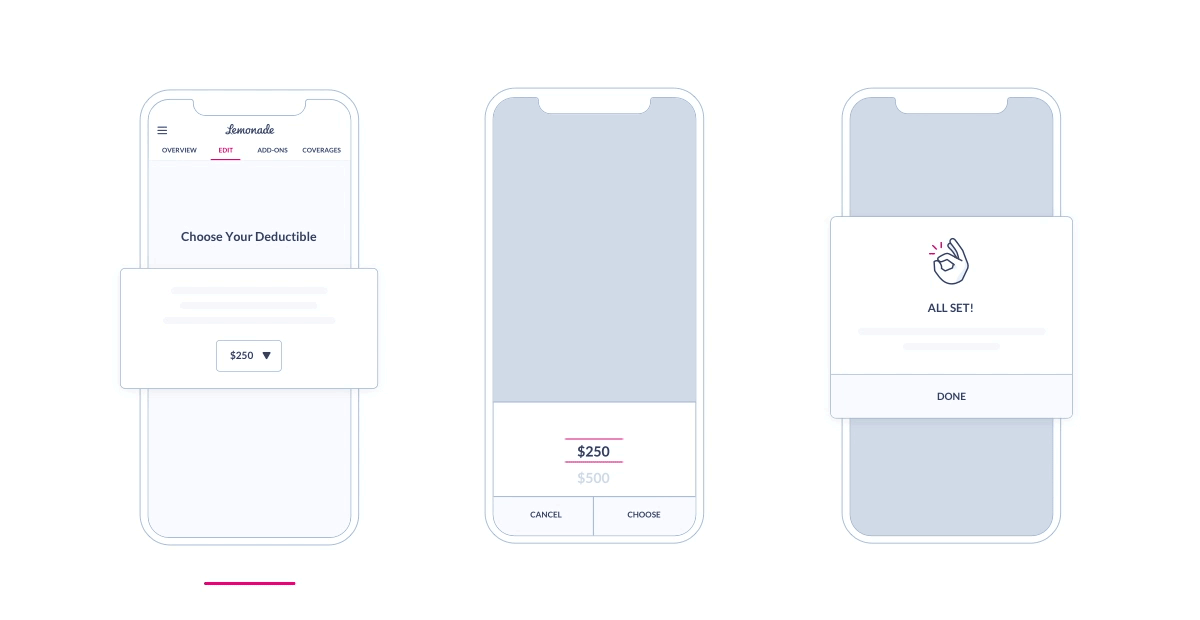Whether you rent a cozy apartment in Greenpoint or a spacious 2-bedroom in Albany, if you’re a renter in New York, you’ll want to protect your stuff with renters insurance.
Renters insurance in New York covers you for a whole slew of bad things that could happen to you and your stuff—from fire to theft to a natural disaster.
What does renters insurance in New York cover?
Renters insurance in New York can cover your stuff for a lot of potential damages, plus offer liability coverage if you unintentionally harm another person or their property.
Here’s a breakdown of the different types of coverage that a standard renters insurance policy includes:
Loss of Use
If your place becomes uninhabitable due to covered damages, your ‘loss of use’ coverage may help pay for a temporary place to stay as well as additional living expenses such as food, laundry, parking, etc.
Personal Property
‘Personal property’ covers your personal belongings both inside and outside your home for theft, fire, vandalism, etc. So if your couch is ruined due to that burst pipe, or your laptop is swiped at a coffee shop, renters insurance has your back.

Liability Protection
If your neighbor slips and falls in your apartment, you could be liable. If someone is injured on your property, or anyone on your policy causes damage to someone else’s property or stuff, your insurance company should have you covered.
Medical Protection
If your neighbor needs to go to the hospital because of that slip and fall, your medical payments will kick in. Renters insurance covers you if your guests get injured at your place, or people you may have accidentally hurt outside of your home as well.
As an introverted millennial with phone anxiety, being able to switch my @Lemonade_Inc renters insurance via app in two minutes while standing in line at Starbucks quite literally made my day.
Christina Murphy, New York
Is renters insurance required in New York?
While renters insurance isn’t legally required in New York, it’s highly recommended for anyone living in the Empire State.
Even though state law doesn’t mandate renters insurance, you shouldn’t be surprised if your landlord requires it as part of your lease agreement. Many landlords want to ensure that tenants have coverage, which helps protect the property and provides peace of mind for both parties.
Investing in renters insurance is a smart move whether you’re renting a cozy apartment in Brooklyn or a spacious two-bedroom in Albany. It’s an affordable way to safeguard your valuables and manage risks that could otherwise result in significant out-of-pocket expenses. The good news is that it’s easy to sign up for a renters insurance policy with Lemonade, and you’ll thank yourself later if your stuff gets stolen or damaged!
When signing up for renters insurance, your landlord might request they be added as an ‘interested party’ on your policy. This just means they’ll be kept in the loop when you make any changes to your renters insurance coverage —or if you cancel your policy. It’s super easy to add them using the Lemonade app.
How much does renters insurance cost in New York?
As of 2025, the average estimated cost of Lemonade renters insurance in New York ranges from roughly $10 to $15 a month.*
When it comes to your renters insurance premium, there’s no one-size-fits-all price. Your friend living in Williamsburg will have a totally different premium than your cousin renting in Buffalo. (Ditto if you’ve decided to leave NYC and head upstate to Kingston, which we consider one of the best cities for young professionals, especially if you’re a creative worker with a remote job.)
But aside from location, there are tons of other variables that factor into your renters insurance price. Let’s break them down:
Age of your building
If your apartment building is brand new, you could get a discount on your renters insurance policy! However, old buildings are more likely to have structural issues or problems with the electrical or plumbing systems, which may jack up the price of your insurance a bit.
Protective devices
If you have a fire alarm, for example, you could get a discount on your renters insurance. That’s because they’ll allow you to catch a fire before it damages your stuff.
Amount of insurance
The cost to replace all of your belongings has an impact on the price of your renters insurance policy. So if you have $50,000 worth of personal property (aka, ‘stuff’), your renters insurance policy will probably be a bit pricier than if your stuff is worth $10,000.
Deductible
The lower your deductible, the higher your homeowners insurance price. So choose a deductible that makes the most sense for your lifestyle.

Add-Ons
If you add expensive jewelry or fine art or tack on water backup coverage to your policy, your price will go up a bit.
Claims history
If you’ve never filed an insurance claim, you’ll probably have a cheaper renters insurance policy than someone who has a history of filing claims.
Your insurer
Different insurance providers offer different rates—depending on their expenses, business model, etc. But the average price of Lemonade renters insurance across the US is just $14/month.
How to lower your renters insurance rate in New York
Renters insurance is generally quite inexpensive, but there are still some tricks for landing a lower rate. Here are a few:
- Check for security devices: See if your rental property has a fire alarm or burglar alarm—you could qualify for a discount.
- Pay in full: Paying your annual premium all at once rather than month-to-month will get you a discount with many renters insurance companies, including Lemonade.
- Adjust your deductible and coverage amounts: Increasing your deductible and lowering your total coverage amount are guaranteed ways to lower your premium. Just make sure that you’re comfortable paying your higher deductible out of pocket if need be—and that you aren’t compromising on any necessary coverage.
- Bundle: Save money on your renters insurance by bundling multiple policies. You can get a discount by bundling renters insurance with car insurance, for example. Or, if you’re a pet owner, why not bundle renters with pet insurance? You can start your quote by clicking the button below.
Get a customized renters insurance quote in New York
Getting renters insurance can be time-consuming, confusing, and expensive. But since Lemonade’s insurance is powered by tech, you can get a policy on the Lemonade app in less than 2 mins, at the lowest prices on the market. Zero paperwork, zero hassle.
Plus, if you ever need to file a claim, Lemonade processes them instantly, approving 30% in a mere 3 seconds! Check renters insurance off your to-do list, get a quote.
*Lemonade Insurance analyzed policy rates to calculate average renters premiums as of January, 2025. This analysis is based on Lemonade’s internal data and is meant for illustrative purposes only; quotes may vary depending on individual circumstances.
A few quick words, because we <3 our lawyers: This post is general in nature, and any statement in it doesn’t alter the terms, conditions, exclusions, or limitations of policies issued by Lemonade, which differ according to your state of residence. You’re encouraged to discuss your specific circumstances with your own professional advisors. The purpose of this post is merely to provide you with info and insights you can use to make such discussions more productive! Naturally, all comments by, or references to, third parties represent their own views, and Lemonade assumes no responsibility for them. Coverage and discounts may not be available in all states.




